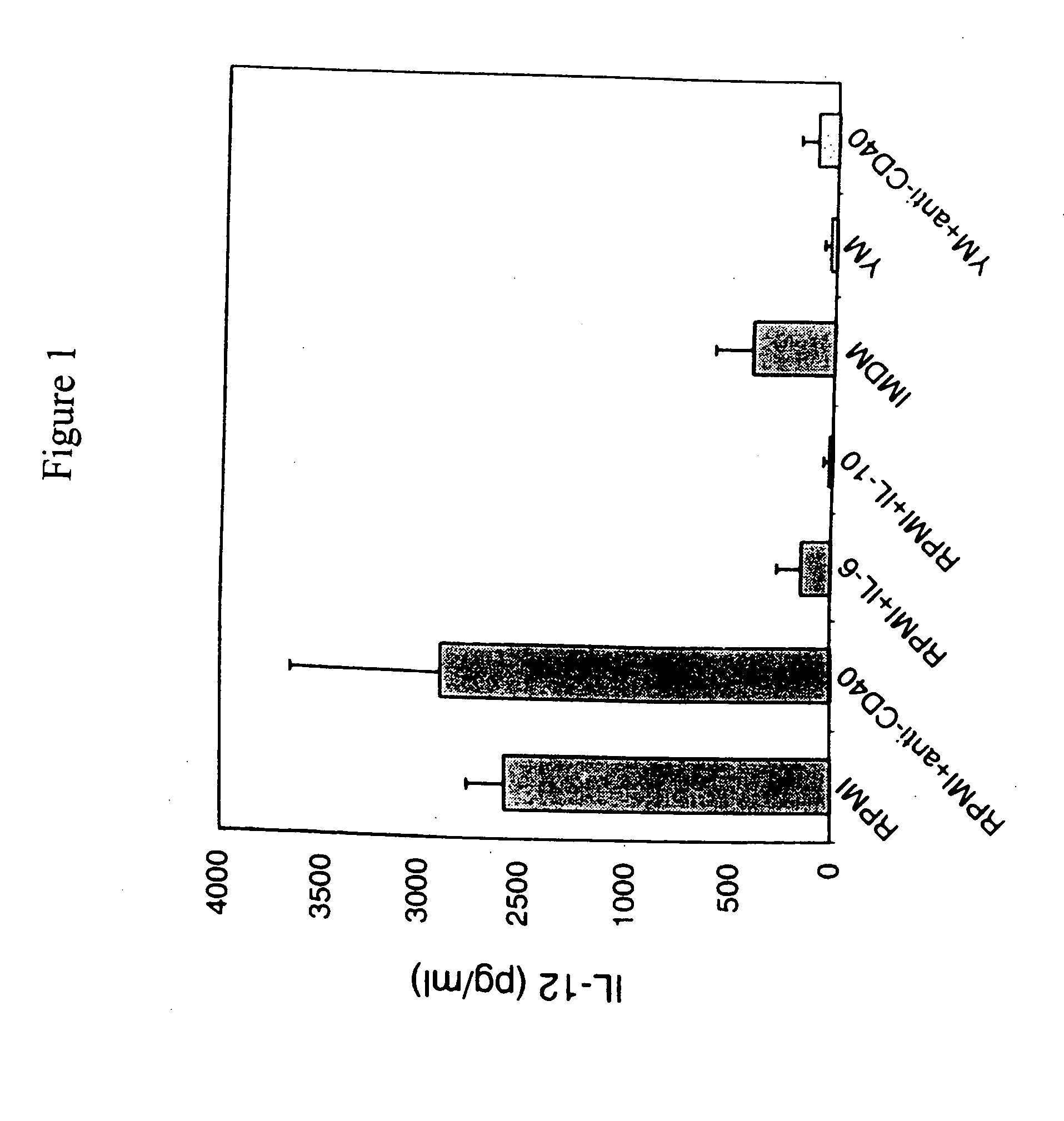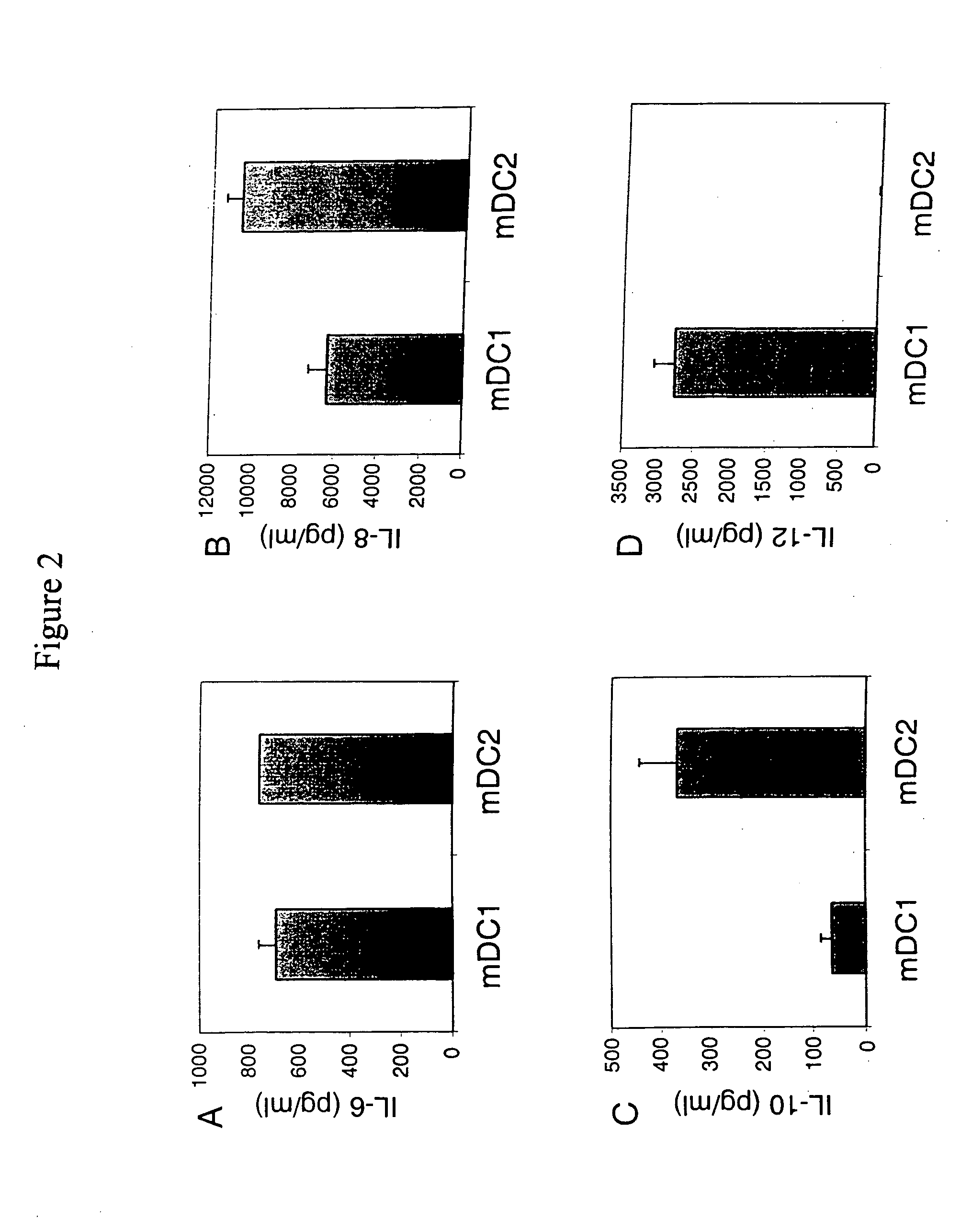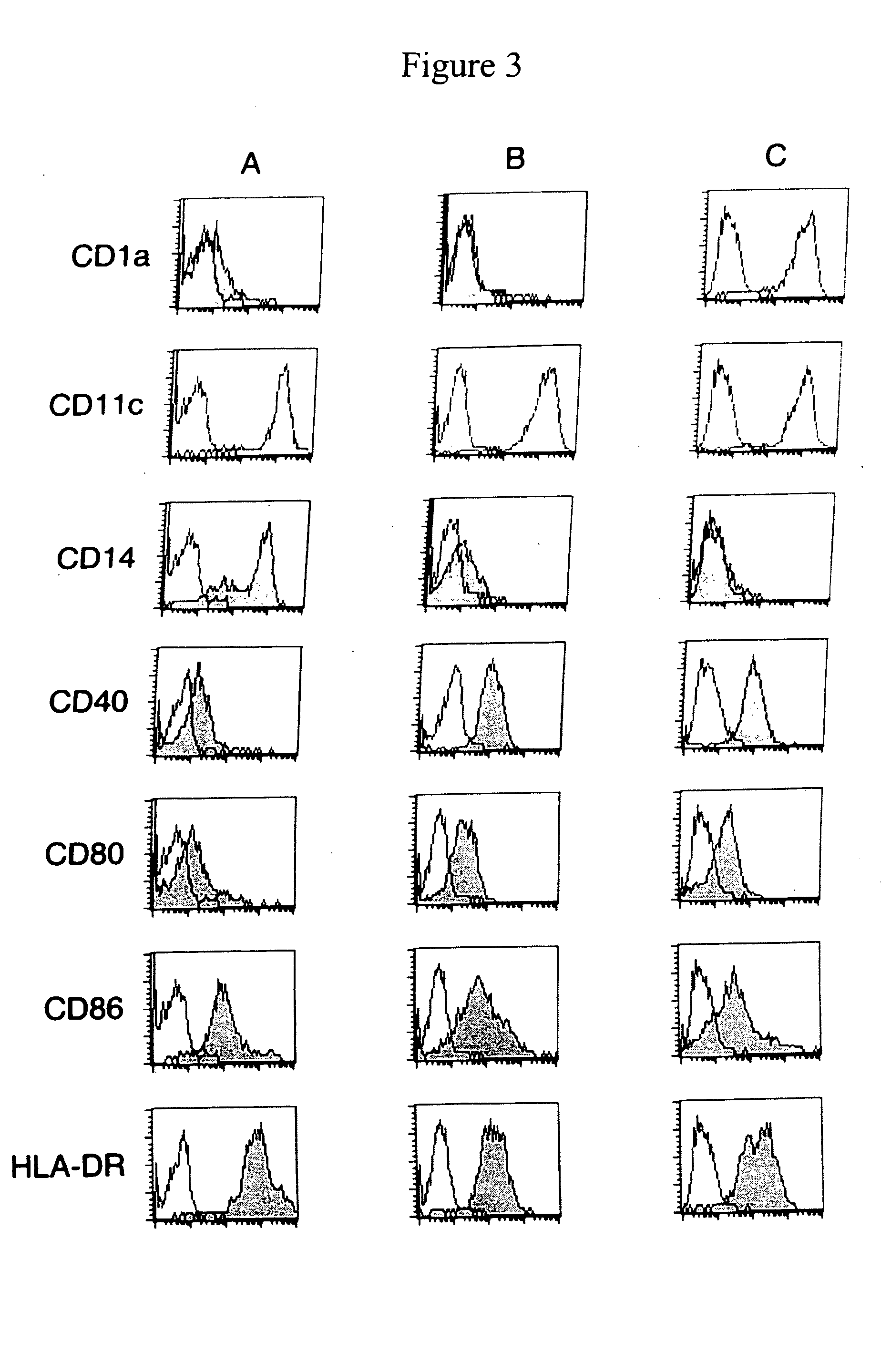Monocyte-derived dendritic cell subsets
a dendritic cell and monocyte technology, applied in the field of immunology, can solve the problems of limiting the utility of dendritic cells in many applications, the inability to influence the response of t cells toward a th2 phenotype, and the use of dendritic cells as immunotherapeutic agents, so as to improve the ability to act, enhance the amenability to transfection, and enhance the development of t cells
- Summary
- Abstract
- Description
- Claims
- Application Information
AI Technical Summary
Benefits of technology
Problems solved by technology
Method used
Image
Examples
example 1
Differentiation of Novel Subtypes of Dendritic Cells in Culture
[0189] Dendritic cells with novel cytokine production profiles, improved trans properties, and altered capacity to direct Th cell differentiation were generated after culture in vitro by the methods of the invention. Materials and methods for the generation of the novel antigen-presenting cell subtypes are described in detail below. Such materials and methods can also be employed to generate such APC subtypes ex vivo or in vivo in the cells, tissues, and / or organs of subjects.
[0190] 1. Cell Preparations and Culture Conditions
[0191] Peripheral blood was obtained from healthy blood donors as standard buffy coat preparations collected at Stanford University Medical School Blood Center (Palo Alto, Calif.). Peripheral blood mononuclear cells (PBMC) were isolated by a Histopaque density-gradient centrifugation and washed twice with PBS (phosphate-buffered saline) at +4° C. Monocytes were purified by negatively depleting T, ...
example 2
Phenotypic Characterizaion of Dendritic Cells Producing High or Low Levels of IL-12
[0207] To analyze whether the lack of IL-12 production by DC cultured in the presence of Yssel's medium was associated with altered expression of cell surface antigens, phenotypic characterization of the cells was performed by using flow cytometry as described above in Example 1. Monocytes that were differentiated in Yssel's medium had the typical morphologic appearance of dendritic cells and expressed markers characteristic of DC, such as, e.g., CD11c, CD40, CD80, CD86, and MHC class II, as shown in FIG. 2, which illustrates the phenotypic characterization of DC generated in the presence of RPMI or Yssel's medium. Freshly isolated monocytes (A), or DC differentiated in the presence of IL-4 (400 U / ml) and GM-CSF (800 U / ml) in RPMI (B) or Yssel's medium (C) were harvested and stained with mAbs (as indicated in FIG. 2). The expression levels of the corresponding antigens were analyzed using a FACScalib...
example 3
MDC2 Produce Increased Leves of IL-10 Ccompared to Conventional MDC1
[0210] To further study the cytokine production profile of the novel DC of the present invention (e.g., mCDC2), and to exclude the possibility that low or lack of IL-12 production related to a generally poor response or non-specific reduction in response of the cells to activation, the capacity of mCDC2 cells to respond to activation by producing IL-6, IL-8 and IL-10 was evaluated. mDC1 and mDC2 derived from the same donor were activated with LPS and IFN-γ for 24 hours. Supernatants were collected and cytokine levels were determined by using cytokine-specific ELISA as described above.
[0211] Cytokine production profiles of mDC1 and mDC2 are shown in FIG. 3. DC were generated in the presence of IL-4 (400 U / ml) and GM-CSF (800 U / ml) in either RPMI (mDC1) or Yssel's medium (mDC2). DC were harvested after a culture period of six days, the cells were cultured for an additional 24 hours in the presence of LPS (1 ng / mI) p...
PUM
| Property | Measurement | Unit |
|---|---|---|
| Composition | aaaaa | aaaaa |
| Efficiency | aaaaa | aaaaa |
| Pharmaceutically acceptable | aaaaa | aaaaa |
Abstract
Description
Claims
Application Information
 Login to View More
Login to View More - R&D
- Intellectual Property
- Life Sciences
- Materials
- Tech Scout
- Unparalleled Data Quality
- Higher Quality Content
- 60% Fewer Hallucinations
Browse by: Latest US Patents, China's latest patents, Technical Efficacy Thesaurus, Application Domain, Technology Topic, Popular Technical Reports.
© 2025 PatSnap. All rights reserved.Legal|Privacy policy|Modern Slavery Act Transparency Statement|Sitemap|About US| Contact US: help@patsnap.com



